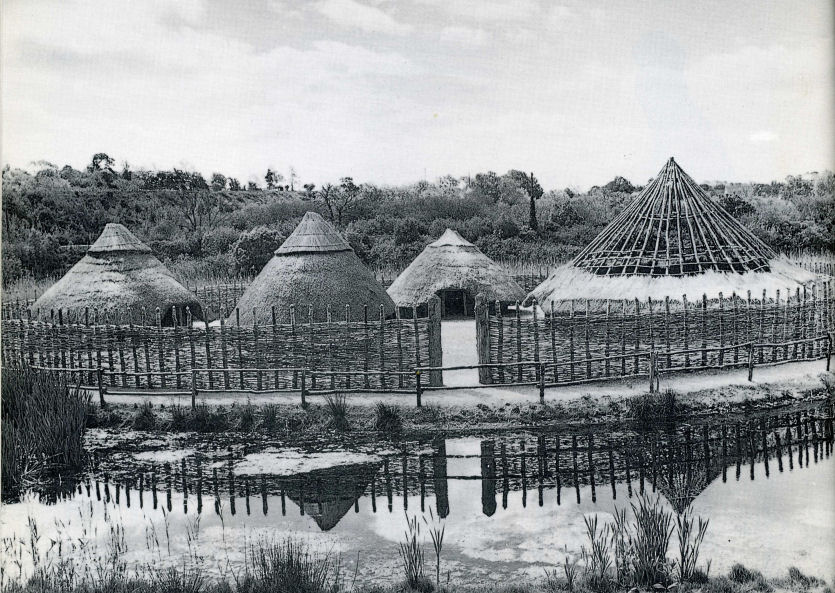|
Crannóg or Lake Dwelling |
|
Artificial islands are known to have been constructed from Stone Age times (Neolithic) right up to the Middle Ages. It is, in effect, the rath or ring fort in water, a safe habitation for a man and his family. The foundations of the crannog (CRAN-oge) usually consisted of layers of brushwood, sods or peat but all kinds of serviceable materials such as stones and bones were also used. A timber palisade surrounded the island. The name itself is derived from the Irish words crann óg meaning 'young tree'. Access was by boat, as shown by the discovery of jetties and dugout canoes at some crannogs. Causeways were also used. The example shown here is based on actual remains excavated at Moynagh Lough, Nobber County Meath. (Courtesy of the Irish National Heritage Park, Ferrycarrig, County Wexford.) |
 |

